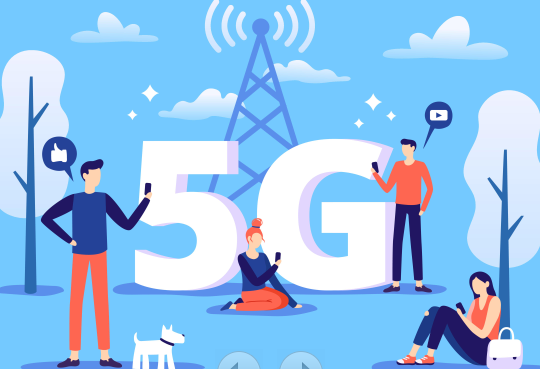The Benefits of 5G Technology for Educational Upgrading

The Benefits of 5G Technology for Educational Upgrading

With over 250 million students, India has one of the largest education sectors in the world. With more than 25% of the population aged between 05 and 14, a strong education system is needed to prepare the workforce of the future. 5G cellular networks with superior latency and reliability performance will enable students to sense physical objects and control them remotely, changing the game in education. As Educational Technology (EdTech) and Education 4.0 are upgrades to 5G technology, let's dive into their benefits and challenges, enjoy personalized experiences and share discoveries.
Purify the wired world
Although Wi-Fi is an older wireless technology, it is widely used in homes, offices, schools and universities to provide connectivity. Not very safe due to low indoor and outdoor coverage, unreliable due to interference. Today, 4G provides a wide range of services and Wi-Fi-6 provides indoor coverage. Still, there are compelling reasons for allocating resources. By eliminating these challenges, 5G offers the twin benefits of faster speed and mobility, bringing IoT-rich smart campuses within reach. Most global universities are exploring how 5G technology can be shared for the rural education sector, facilitating learning from home to students, and remote access has been impressed by the increase in one-to-one learning following the arrival of 5G.
Hologram translation is very helpful for people to learn and explore their field of study.
unlimited tuning
Next-generation wireless technology is the new upgrade education. Access points are installed in schools, network coverage is established, and LTE/5G signals are propagated in all directions of the building, which makes it easy to connect learners and continue learning even from a distance, therefore, the 600 Hz to 6 GHz frequency band 5G spectrum is aligning learning without the constraints of 5G-based EdTech and campus private networks. It provides a faster, unrivaled learning experience for students to facilitate teacher professional development, school-to-work transition, and connect students who were otherwise otherwise unable to due to lightning speed and massive data capacity. Together, these benefits can make a huge difference in digitally equipped classrooms and distance learning environments.
Accelerate knowledge transfer
With 5G educational technology, students and educators can work more closely together on classroom assignments or immersive programs. In addition, 5G can realize IoT connection and simplify management processes such as attendance monitoring. Perhaps most importantly, 5G could provide a cost-effective way to wirelessly deliver fiber-like internet speeds to institutions such as schools, solving some of the “last mile” challenges in rural areas through fixed wireless access (FWA).
FWA enables extremely high-speed broadband in rural areas where fiber-optic connections are cost-prohibitive and difficult to establish. Innovation in education is only good to the extent that it is accessible and available to the students who need it most. There is currently a homework gap where students in rural remote areas cannot use the same connections as other students. We must make this a level playing field for them to rise to the challenge while being the next creators, innovators and the next to lead our country. 5G will open the door to augmented and virtual reality to amplify our students' learning and give them the support they need to succeed in life. Educational institutions should have cellular coverage, high throughput for uninterrupted learning, and low latency to support services such as online video lectures.
Touting the new reality of the age
The rollout of 5G in many areas of advancement such as EdTech, AR, VR XR, and Metaverse can redefine classroom education and make it more interesting and meaningful by practically demonstrating complex theoretical concepts. Professional training, including medical, engineering, and defense, would be greatly disrupted by metaverse capabilities. Metaverse allows physicians to study various internal organs of the body virtually without dissecting body subjects to simulate manipulations, an integral part of defense training that can be easily implemented with Metaverse.
Since people can converse in their own dialect, which is quickly translated, universities and institutions across the globe can collaborate regardless of language and cultural barriers.
Bringing 5G to Reality
Reliable 5G coverage means students, teachers and staff can connect virtually anywhere they study. Private networks have led to the deployment of numerous use cases in schools and other educational institutions. AR/VR applications enable immersive learning through online technology. Higher education recruitment strategies. Internet of Things (IoT) saves time for teachers through smarter 5G classrooms. Special needs students are assigned full time assistants and when you see teacher shortages in rural areas are an issue the doors are wide open for language immersion and if you can actually connect with another school or online provider they can help To fill that gap, it's the economic development of a workforce in rural areas who are able to expand learning but also expand the capabilities of students. If only we had connectivity and technology at the fingertips of these rural students.
5G upgraders are education builders
5G is reshaping the education industry as educators embrace new learning models to educate their students. On the road to digital invention, educational institutions have become smarter, enhanced connectivity and data security, and upgraded programs to ensure that students have the right skills for the future. However, the shift to virtual schools will also create more job opportunities, with skills in online/remote student help desks, cloud architecture, and advanced learning analytics in high demand. Widespread adoption of AR and VR technologies in educational institutions will require proper implementation skills. Teachers also need to develop skills to use these technologies effectively.